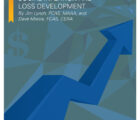Uh oh. You got the email. You’re in the random sample to have your continuing education (CE) documentation reviewed!
Every year, the Continuing Education Review Committee selects approximately 90 CAS members from around the world for a review of CE documentation. This doesn’t have to be stressful — if you’ve prepared appropriately.
Reviewing CE records is an important component of the CAS professionalism policy, and the CAS is the only U.S. actuarial organization that conducts such reviews. The review helps establish, both in fact and appearance, that CAS members exercise the highest level of professionalism.
The review of CAS records went very well in 2013. All members reviewed were found in substantial compliance. Just about all members got feedback on how to improve their documentation, and the reviews did entail quite a few requests for additional information to verify all aspects of the policy.
The CE Compliance Top 10 List
So what are the most important things to remember to be confident that your CE compliance is beyond question? Based on the review of 2013 records, the top 10 things to keep in mind as you accumulate credits are as follows:
-
- Choose your standard carefully. CAS members have several potential paths they can choose, such as approved national standards in the U.S., U.K., Australia and Canada, but they must choose the appropriate standards that apply to them. For U.S. members, you are safe if you choose the Academy of Actuaries U.S. Qualification Standard, as it applies to almost all of us in the U.S. CAS members practicing in the U.K., Australia and Canada almost always should follow their national standards as well.
- Read the standard over. There are quite a few details to watch for, such as minimum professionalism credits or maximum general business credits. And remember, strangely enough, the time it takes to upgrade your knowledge on CE requirements could count as professionalism CE!
- Prepare your record-keeping approach. Organize your documentation method at the start of the year, whether it is a mandated employer’s record system, a spreadsheet following the format in the U.S. Qualification Standard, or the Academy of Actuaries TRACE system. That way keeping the records up to date is a snap.
- Maintain records throughout the year. Why test your memory at the end of the year? As you take that webinar, read that paper or attend that meeting, take a minute or two and tap the information into your records. The running tabulation will bring confidence and avoid any chance of a scramble at year end.
- Make sure it’s relevant. The time it takes to pick the lunch menu for the local actuarial club meeting does not automatically count as CE. Definitions may vary, but the activity must meet the requirements of relevant learning that “broadens and deepens your understanding,” as articulated in the U.S. Qualification Standard.A great source of CE credits is volunteer work. Whether you are putting together educational panels for meetings, reviewing papers for Variance or evaluating new regulations as part of an Academy panel, this work can be fulfilling and good CE as well. Just be sure you document what you are counting. Generally, a sentence will do.
- Document carefully. Remember a reviewer may need to review and agree with how it counts, so document in enough detail so it’s clear whether the activity is organized/structured or general, and whether it will count as specific qualification, general business, professionalism and so forth.
- For meetings, document which sessions you attended. An entry in your log of “16 hours, annual CAS meeting” is not sufficient to document how this counts under the specific standard and other categories of CE. Keeping a record of which sessions you attend is important. (A special note regarding CAS meetings held in Orlando: Sorry, any session attended by Disney characters would most likely not count as CE. That may change once Mickey finishes his exams.)
- Document a few extra hours. You may disagree on whether or not that CAS session on unveiling the new logo qualifies as a general business skill credit, but it’s a much more comfortable situation if such a session doesn’t make or break the compliance determination.
- If reviewed, be responsive to questions. Remember, Continuing Education Compliance Committee members are volunteers whose goal is to help. They have your best interests at heart.
- Have fun! Especially for the educational sessions you attend in person, the CAS provides great opportunities to not only learn, but also network and broaden your contacts. Contrary to popular perceptions, time spent on CE activities can still count toward your requirements, even if you enjoy them.
Imagine if your doctor spent less than 30 hours a year to keep up with changing medical techniques and treatments. You wouldn’t likely stick with that doctor for long.
The Benefits of Compliance
The actuarial field is changing at a faster pace than ever, and being a seasoned practitioner is no longer enough. Imagine if your doctor spent less than 30 hours a year to keep up with changing medical techniques and treatments. You wouldn’t likely stick with that doctor for long. For the same reasons, spending the time it takes to keep up with changing techniques, regulations, reforms, technology, guidance and analytics benefits the actuary, as well as the actuary’s employer or client.
Remember, the biggest beneficiary of “bulletproof” compliance is you! In the event you need to defend your qualifications for any reason, questioners could be looking for holes to exploit. If you follow these simple rules, and take the time to understand the requirements, you won’t have to worry even if the review email comes!
Chris Nyce is a principle with KPMG in Radnor, Pennsylvania.











